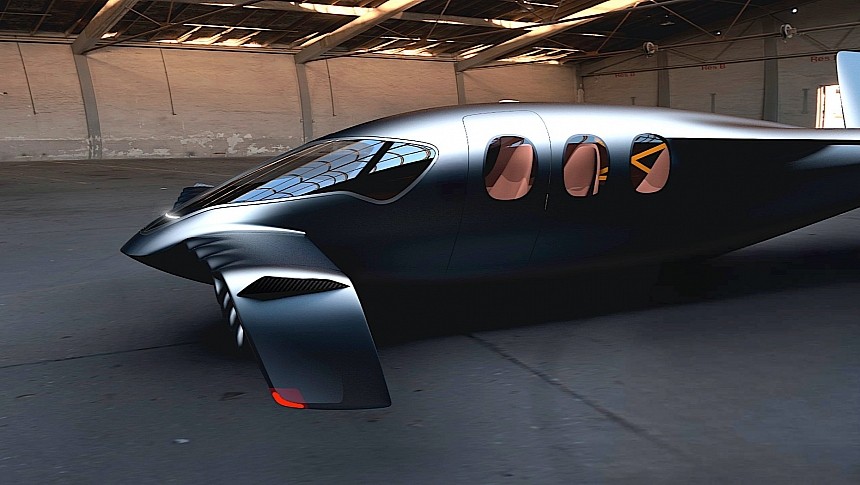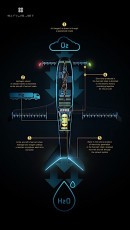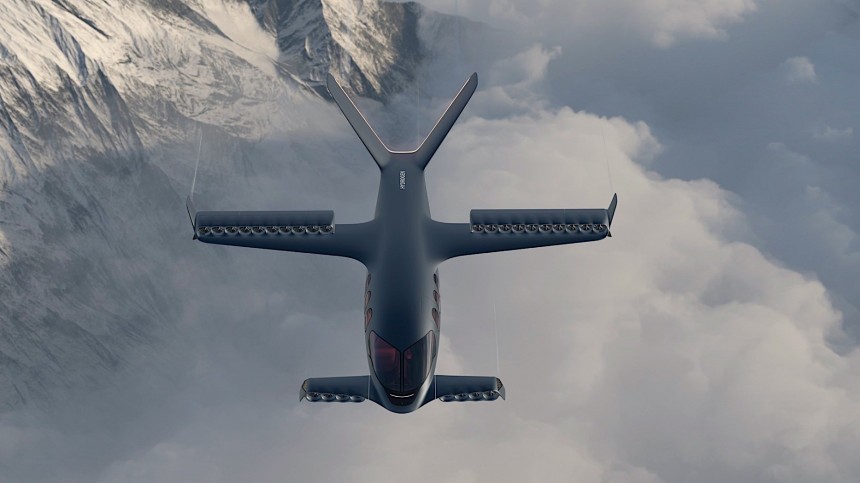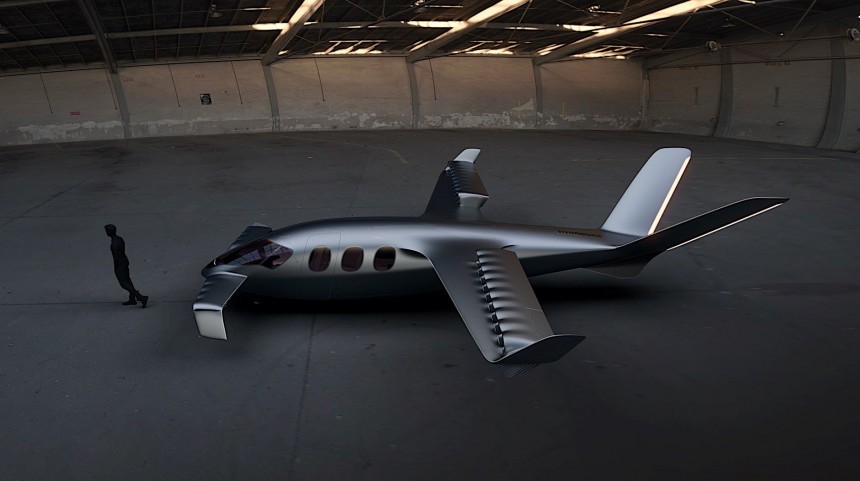The world of VTOLs is fast expanding and promises to forever change the way air travel is made. There are several driving forces behind this expansion, ranging from the need to declutter our very congested cities and airports to the need to find better, faster, and cleaner means of transportation.
There is however a crucial aspect of this expansion one needs to consider. At the moment, it's only taking place on paper, and it's more of a smoke screen. Vertical take-off and landing concept aircraft are rolling out faster than we can report about them, but virtually none of them is in operation at the moment.
There are promises made, backed by huge amounts of money being invested, that we will get to see VTOLs fly commercially soon enough. And, if we are to trust what we're told, one of the aircraft that is closest to the moment it'll start flying people is the Sirius Jet.
Sirius Jet is the product of a Swiss startup company called Sirius Aviation. It's called a jet because, unlike most of the other VTOLs we know about, which use motor-driven propellers, this one uses a ducted fan propulsion system. And it's electric, too. Hydrogen electric, to be more precise.
The powertrain of the Sirius Jet comprises a high energy-density hydrogen storage system, where the fuel is stored. From there, it is channeled toward a fuel-cell stack where, together with the oxygen that is drawn in during flight through a special intake fitted on the aircraft's nose, enters a reaction. This reaction results in the generation of electricity and water.
Electricity, naturally, is then sent to the electric motors. We're not told how many of them are on board, but the photos released by Sirius show no less than 28 propellers (eight front and 20 rear, equally divided between the right and left sides of the aircraft).
Assuming each one is spun by its own motor, that would be probably 28. And each of them develops 224 pounds of force, resulting in a total system output of 6,272 pounds.
The water produced as a result of the reaction is released by the airplane through a special exhaust system installed at the rear.
Because the Sirius has onboard fuel, it doesn't need a battery to store electricity. There is one on board, but that is functional for only 90 seconds during each flight to get things going inside the VTOL. The thing does have a power distribution unit and a converter onboard.
In this configuration the Sirius is described by the company making it as the "world's first hydrogen-powered" VTOL aircraft. A bold statement, and one that needed to be backed by names of companies bigger than the virtually unknown Sirius Aviation.
And guess what? That's exactly what is happening. The design of the Jet wears the marking of two major names in the automotive industry and beyond, namely BMW DesignWorks and the Sauber Group. We don't know the exact contributions brought by each of these companies, but the simple mention of their names is enough to get our blood pumping.
The VTOL is shaped more like a conventional aircraft than like the other vehicles playing in this segment: two small wings at the front, packing four motors each, two more wings about mid-plane, each with ten motors, and a V-tail configuration at the rear. A large windscreen dominates the front end, with three windows adorning each of the sides.
There will be two versions of the aircraft, the Business Jet and the Millennium Jet. The number of passengers each of them will be able to carry seems like a waste of such amazing technology. That is to us, the larger public, as it's likely corporations, stars, and other VIPs will simply love it.
The Business Jet, meant for private needs, will be able to carry just three passengers to a distance of 1,150 miles (1,850 km) from the departure point. The highest it will be able to climb is 30,000 feet (9,100 meters), and it will reach a top speed of 323 mph (520 kph).
The Sirius Millennium Jet is designed for use in the commercial sector, although that may seem like an overstatement, considering it will only be able to carry five people. It also comes with a significantly lower range, 650 miles (1,046 km). The rest of the numbers are the same as with the Business.
Sirius Aviation plans to have both planes in the sky in 2025. That's next year and, although I really hope I am wrong about this, kind of a very bold target.
Just think how many times we've been promised revolutionary aircraft, and then the deadlines came and went, and nothing happened. A major hurdle in the path of such technologies reaching us sooner is regulations, and we have no idea where Sirius Aviation is with those.
There are promises made, backed by huge amounts of money being invested, that we will get to see VTOLs fly commercially soon enough. And, if we are to trust what we're told, one of the aircraft that is closest to the moment it'll start flying people is the Sirius Jet.
Sirius Jet is the product of a Swiss startup company called Sirius Aviation. It's called a jet because, unlike most of the other VTOLs we know about, which use motor-driven propellers, this one uses a ducted fan propulsion system. And it's electric, too. Hydrogen electric, to be more precise.
The powertrain of the Sirius Jet comprises a high energy-density hydrogen storage system, where the fuel is stored. From there, it is channeled toward a fuel-cell stack where, together with the oxygen that is drawn in during flight through a special intake fitted on the aircraft's nose, enters a reaction. This reaction results in the generation of electricity and water.
Electricity, naturally, is then sent to the electric motors. We're not told how many of them are on board, but the photos released by Sirius show no less than 28 propellers (eight front and 20 rear, equally divided between the right and left sides of the aircraft).
Assuming each one is spun by its own motor, that would be probably 28. And each of them develops 224 pounds of force, resulting in a total system output of 6,272 pounds.
Because the Sirius has onboard fuel, it doesn't need a battery to store electricity. There is one on board, but that is functional for only 90 seconds during each flight to get things going inside the VTOL. The thing does have a power distribution unit and a converter onboard.
In this configuration the Sirius is described by the company making it as the "world's first hydrogen-powered" VTOL aircraft. A bold statement, and one that needed to be backed by names of companies bigger than the virtually unknown Sirius Aviation.
And guess what? That's exactly what is happening. The design of the Jet wears the marking of two major names in the automotive industry and beyond, namely BMW DesignWorks and the Sauber Group. We don't know the exact contributions brought by each of these companies, but the simple mention of their names is enough to get our blood pumping.
The VTOL is shaped more like a conventional aircraft than like the other vehicles playing in this segment: two small wings at the front, packing four motors each, two more wings about mid-plane, each with ten motors, and a V-tail configuration at the rear. A large windscreen dominates the front end, with three windows adorning each of the sides.
There will be two versions of the aircraft, the Business Jet and the Millennium Jet. The number of passengers each of them will be able to carry seems like a waste of such amazing technology. That is to us, the larger public, as it's likely corporations, stars, and other VIPs will simply love it.
The Sirius Millennium Jet is designed for use in the commercial sector, although that may seem like an overstatement, considering it will only be able to carry five people. It also comes with a significantly lower range, 650 miles (1,046 km). The rest of the numbers are the same as with the Business.
Sirius Aviation plans to have both planes in the sky in 2025. That's next year and, although I really hope I am wrong about this, kind of a very bold target.
Just think how many times we've been promised revolutionary aircraft, and then the deadlines came and went, and nothing happened. A major hurdle in the path of such technologies reaching us sooner is regulations, and we have no idea where Sirius Aviation is with those.


















